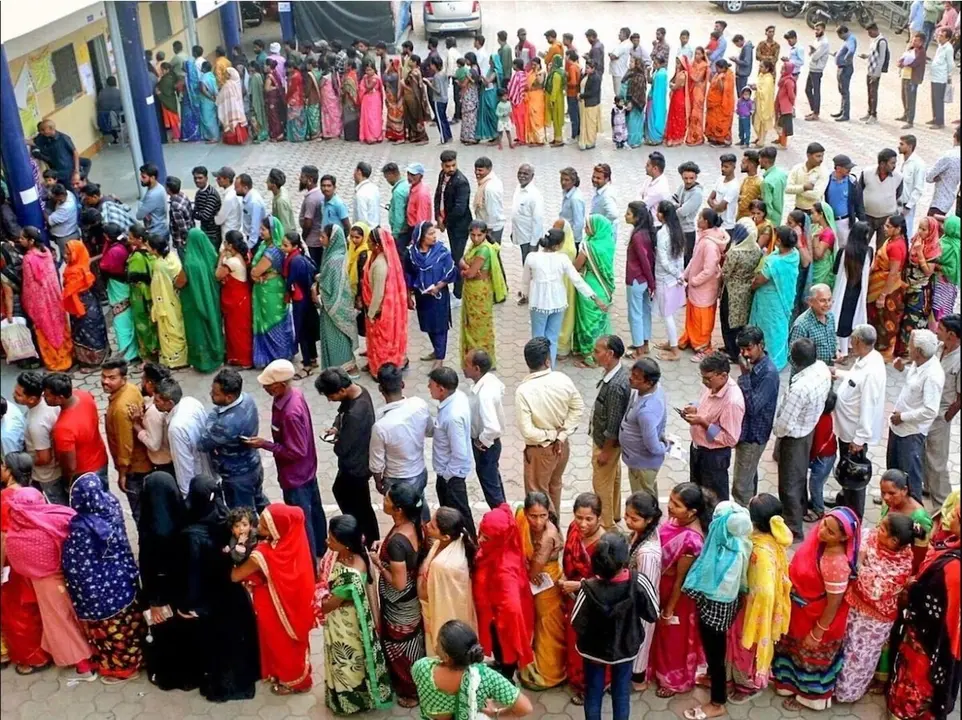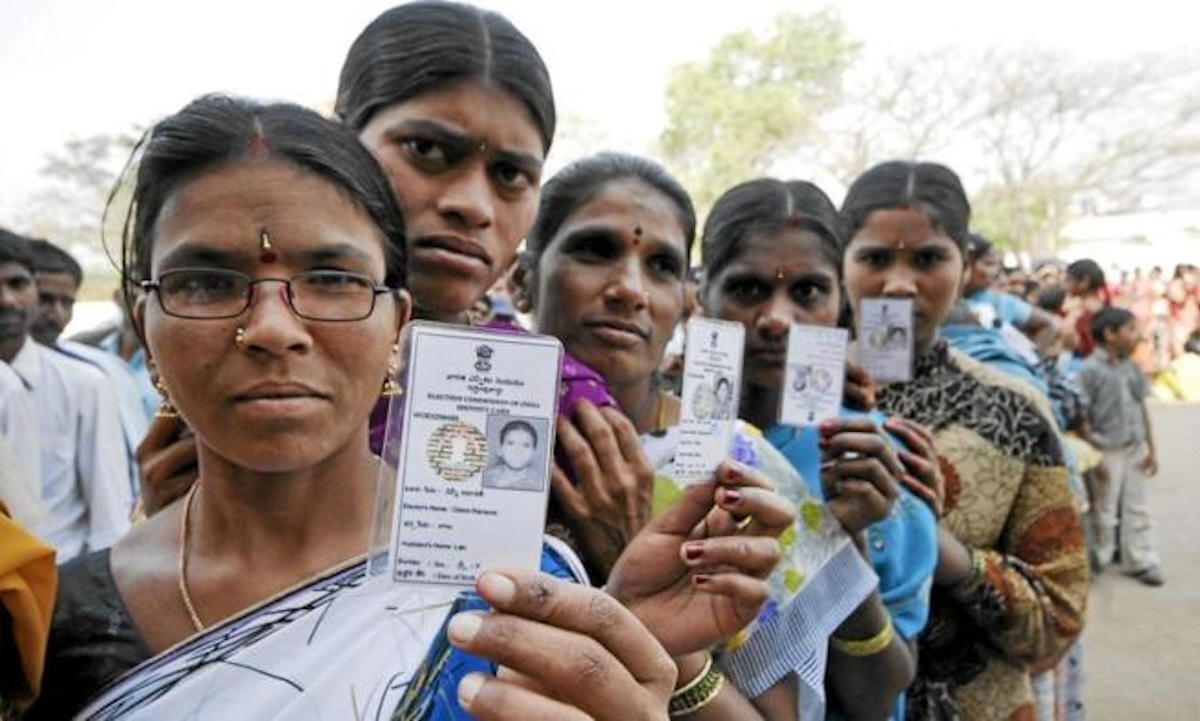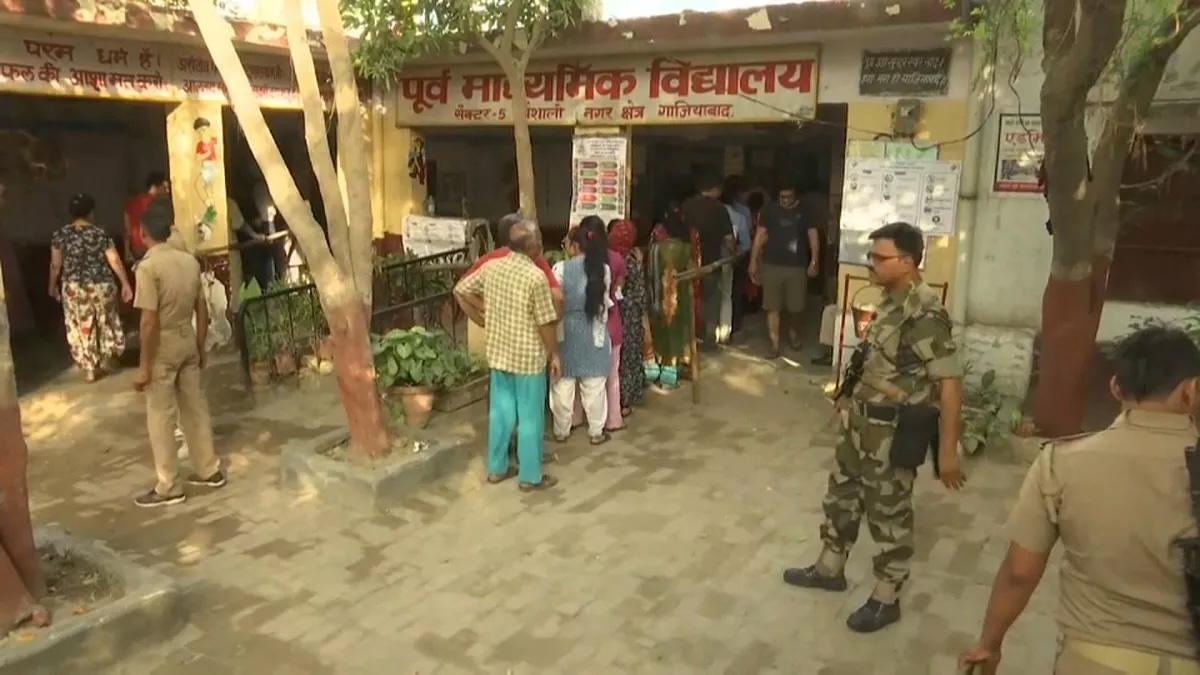General elections in India: Background and trends

- The political parties in these elections
- A brief background of Indian political system
- Electoral politics in India
- What is the trend in the current elections?
General elections for the 18th Lok Sabha (lower house) will be held in India between April and June this year. This is the largest democratic exercise in the world as 970 million Indians will vote in these elections which will be held in seven phases from April 19 to June 1.
The election results will be announced on June 4. Among the voters, 479 million are male voters while 471 million are female voters. The first time voters in these elections are 18 million.
As the world’s largest democracy holds general elections, it is important to consider the background and trends surrounding Indian politics and elections.
The political parties in these elections
There are about 2660 registered political parties in India.
The main parties in these elections include the Bharatiya Janata Party (BJP) which is the ruling party led by Prime Minister Narendra Modi, and the Congress which is among the principal opposition parties.
There are several other national and regional parties which are in alliance with either the BJP or the Congress. The BJP-led alliance is called the National Democratic Alliance (NDA) while the alliance of the opposition parties is called the Indian National Developmental Inclusive Alliance (I.N.D.I.A).
Some of the partners of the BJP are the Janata Dal (United), Shiv Sena (Eknath Shide faction), the Nationalist Congress Party (Ajit Pawar faction), the Telugu Desam Party and the National People’s Party. Some of the members of the I.N.D.I.A are the Congress, the Aam Aadmi Party (AAP), the Samajwadi Party and the Trinamool Congress (TMC).

A brief background of Indian political system
Following independence from the British on August 15, 1947, India adopted parliamentary democracy as the form of government. The Indian Constitution was adopted on January 26, 1950 which proclaimed India as a republic.
Indian parliamentary system consists of bicameral legislature – an upper house, called Rajya Sabha, and a lower house, called Lok Sabha. These are similar to the Senado (upper house) and the Congreso de los Diputados (lower house) in Spain.
The Rajya Sabha has 250 members while the Lok Sabha has 543 members. Members to the Rajya Sabha are elected indirectly while members to the Lok Sabha are elected directly by the people. Until now elections have been held 17 times for the Lok Sabha.
As regards to governance, the President is Head of the State while the Prime Minister is the Head of the Government.
In the elections to the Lok Sabha, the citizens who are eligible to vote directly elect their representatives. In the elections to the Rajya Sabha, 238 members are elected by the members of the Lok Sabha and the members of the state legislatures.
The remaining 12 members are nominated by the President from among the prominent persons belonging to various fields such as arts, literature, sports, business etc.
The term of the Lok Sabha is five years while the term of the Rajya Sabha is six years.
Electoral politics in India
First ever general elections were held in India in 1952. Since then elections have been held every five years. The period from 1952 to 1977 witnessed stability in the electoral politics. This was owing to the fact that the Congress was the only dominant party in national politics and it had no considerable challenge from any opposition party.
However, the Congress government led by Indira Gandhi imposed emergency in India from 1975 to 1977. This resulted in public anger against the Congress which caused Congress’ defeat in the 1977 general elections.
In the 1977 general elections, a coalition of opposition parties won and formed the government. However, this government did not complete its term and elections were held in 1980 in which the Congress won.
This Congress rule lasted from 1980 to 1989. Congress won the 1984 elections as well following the sympathy wave generated across the country because of assassination of Prime Minister Indira Gandhi on October 31, 1984.
Since 1989, the era of coalition politics became a prominent feature of Indian politics as no single party was able to win majority. It led to frequent elections and changes in governments between 1989 and 1991. The Congress formed government in 1991 but did not have majority and had to take support from small regional parties.
The BJP, the current ruling party, had been previously in government in 1996, 1998 and from 1999 to 2004. However, it also had to take support from a number of parties. The coalition politics continued in 2004 as well as in 2009 when Congress led the government with the help of coalition partners.

What is the trend in the current elections?
The trend of no party getting a majority was broken in 2014 when the BJP under the leadership of current Prime Minister Narendra Modi won absolute majority in the Lok Sabha. Although principal parties including the BJP and the Congress continue alliances with other parties, the 2014 elections consolidated BJP’s position in the Indian politics.
The BJP repeated its performance in 2019 improving upon the seat tally it had won in 2014. In 2014, the BJP alone had won 282 seats out of 543 seats. In 2019, the BJP won 303 seats out of 543 seats.
As regards to the current general elections, initial surveys are suggesting that the BJP is likely to win with an absolute majority again. However, politics is an uncertain and unpredictable field, so the picture would be clear only on June 4 when the results will be announced.
Should the BJP win and Modi become prime minister for the third term, he will be the third-longest serving prime minister in India’s history after Jawaharlal Nehru who ruled for 16 years and nine months and his daughter Indira Gandhi, who ruled for 15 years and 11 months.
The BJP is leading its campaign to appeal people with a mix of cultural nationalism and welfare schemes. Indian culture, particularly the construction of the Ram Temple in Ayodhya earlier this year, national security, foreign policy and several initiatives for the poor in the form of welfare schemes are the part of the BJP’s campaigns in these elections.
While the opposition term the BJP as a Hindu party, the BJP has been mindful of focusing on its social and economic policies which it projects as benefitting people across all the groups irrespective of their religion.
The opposition on the other hand is finding it difficult to match the BJP’s electoral mechanism. The opposition is also suffering as there is no cohesion among the parties as to the leadership and a common programme to put before the voters.
India’s diversity across regions and among the people is reflected in the political discourse as well. Indian politics represents various shades of opinion. The principal difference between the BJP and the opposition is that the BJP finds a common base in the form of a wider national identity to bring together diverse groups while the opposition depends on the focusing on specific religious and regional groups and hopes to consolidate their votes.
While navigating in the changing global order since the past more than seven decades democracy has been one of India’s greatest strengths. The current elections would play their role in further laying the path for India’s future in the world order.

